Head and neck muscles
1/42
Earn XP
Description and Tags
Contains head and neck muscles
Name | Mastery | Learn | Test | Matching | Spaced |
|---|
No study sessions yet.
43 Terms
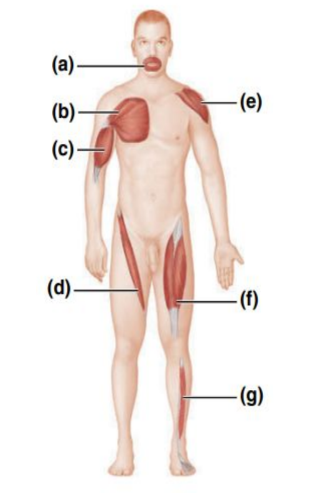
Circular
What fascicle arrangement is letter a?
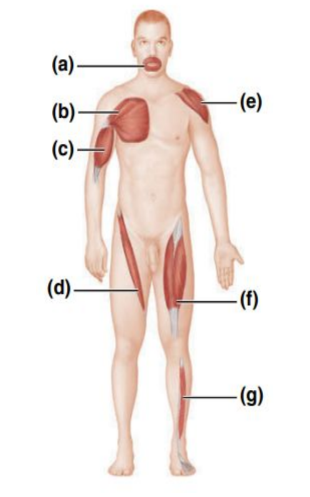
Convergent
What fascicle arrangement is letter b?

Fusiform
What fascicle arrangement is letter c?
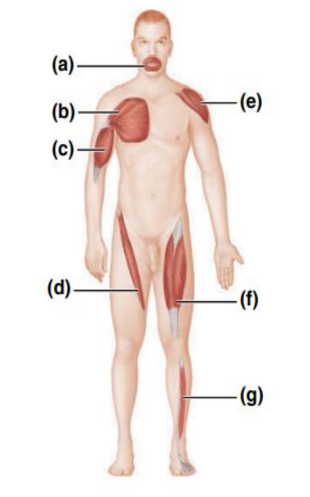
Parallel
What fascicle arrangement is letter d?
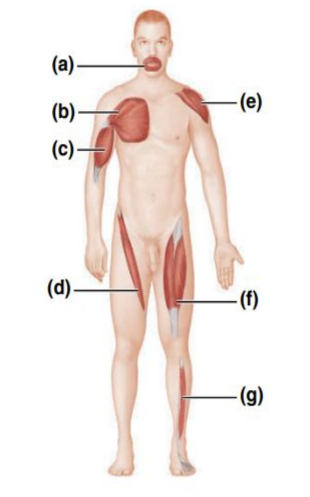
Multipennate (pennate)
What fascicle arrangement is letter e?
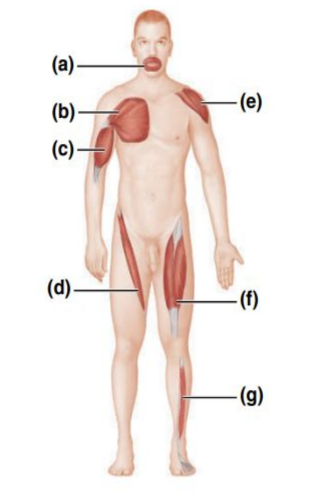
Bipennate (pennate)
What fascicle arrangement is letter f?
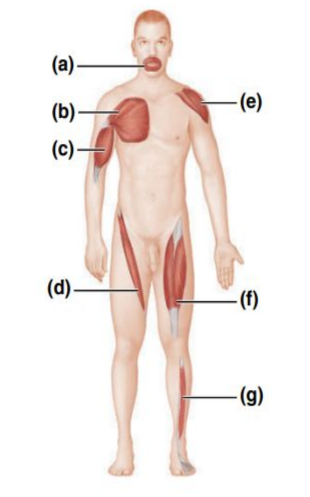
Unipennate (pennate)
What fascicle arrangement is letter g?
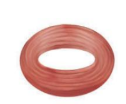
Circular
What type of fascicle arrangement is shown in the picture?
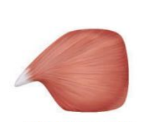
Convergent
What fascicle arrangement is shown in the picture?
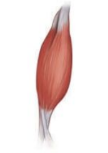
Fusiform
What fascicle arrangement is shown in the picture?
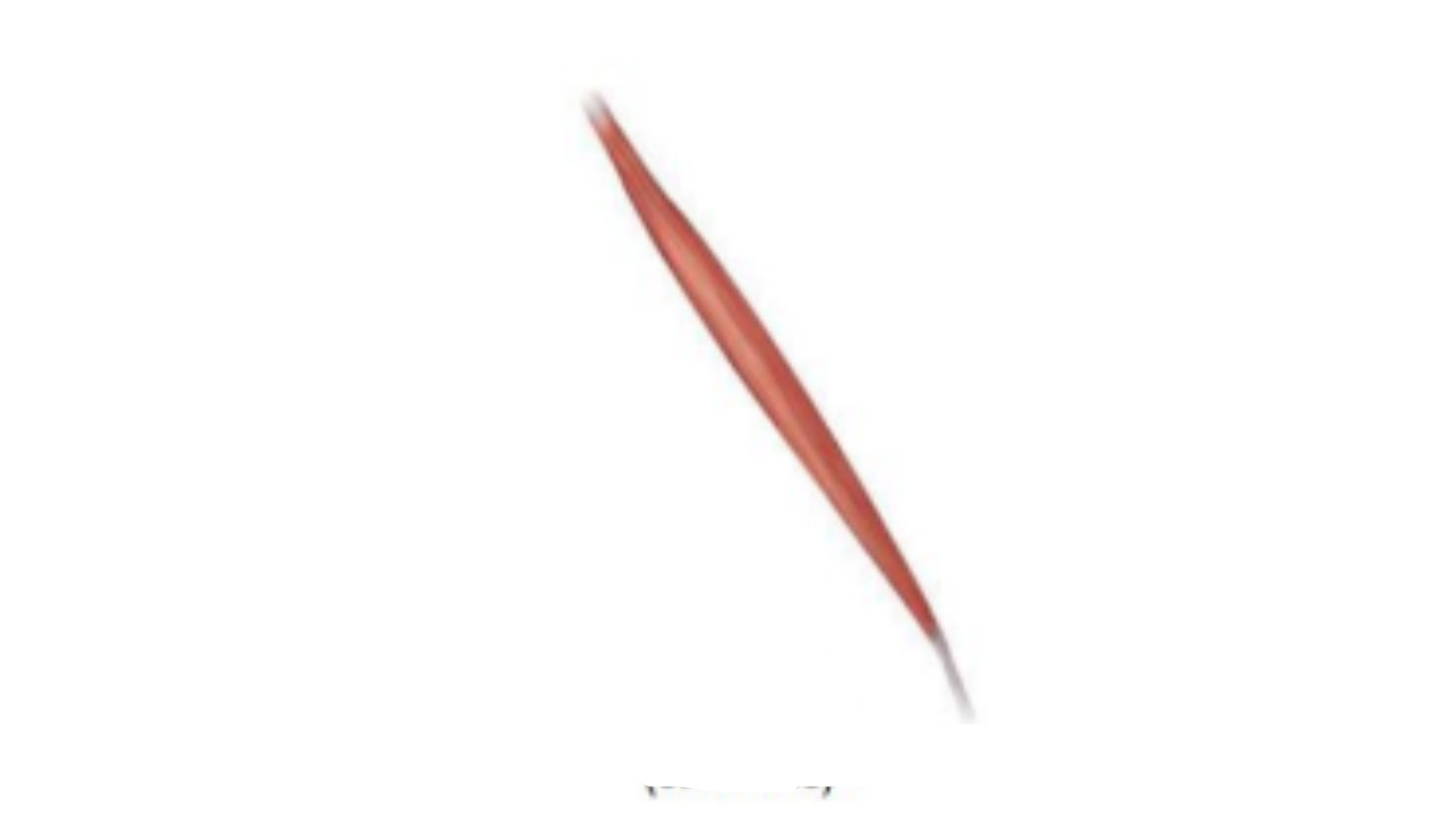
Parallel
What fascicle arrangement is shown in the picture?
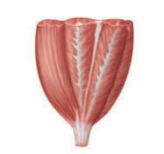
Multipennate
What fascicle arrangement is shown in the picture?
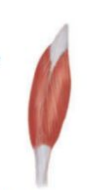
Bipennate
What fascicle arrangement is shown in the picture?
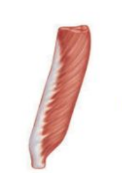
Unipennate
What fascicle arrangement is shown in the picture?
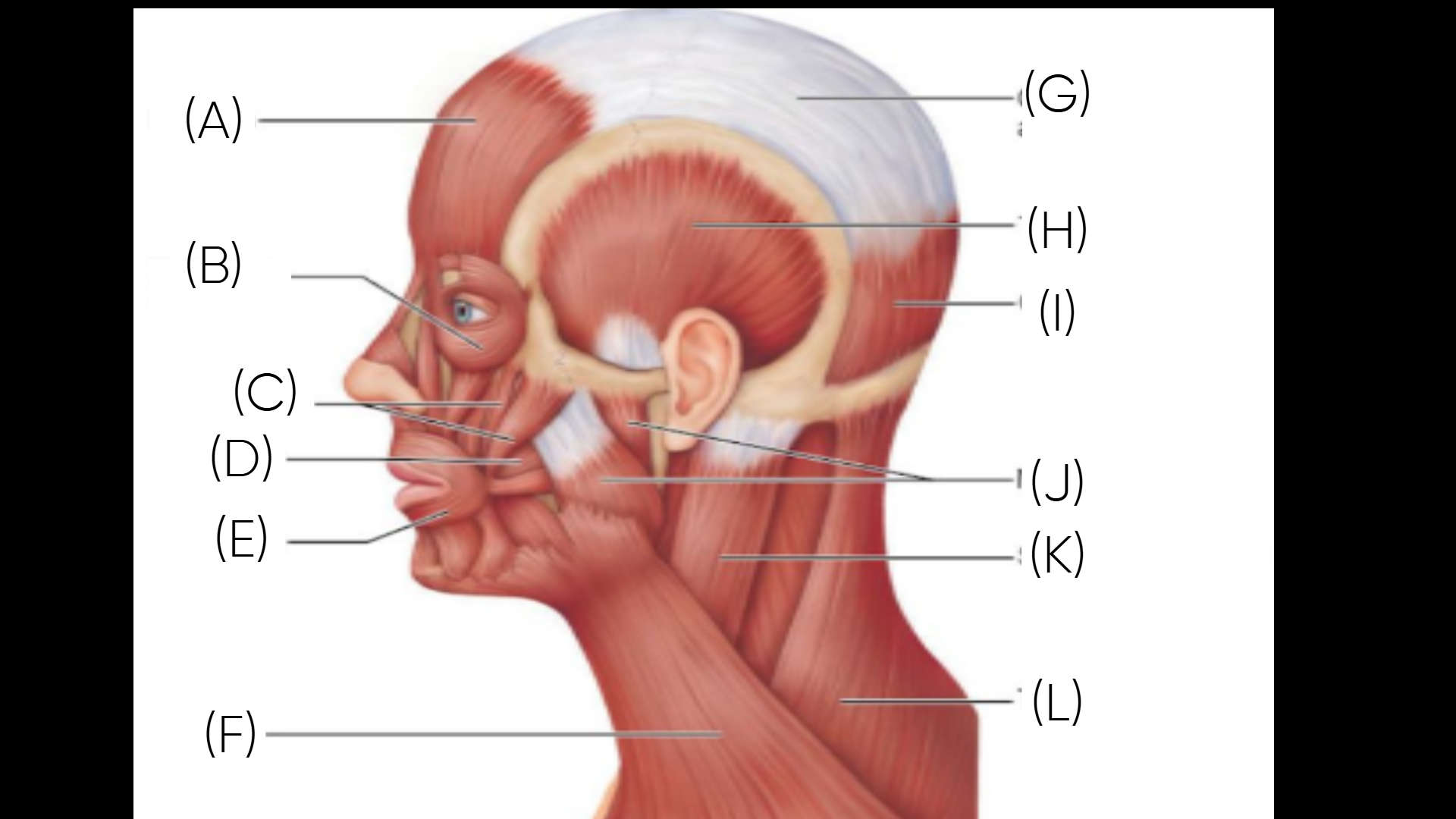
Frontalis
Muscle name of letter a
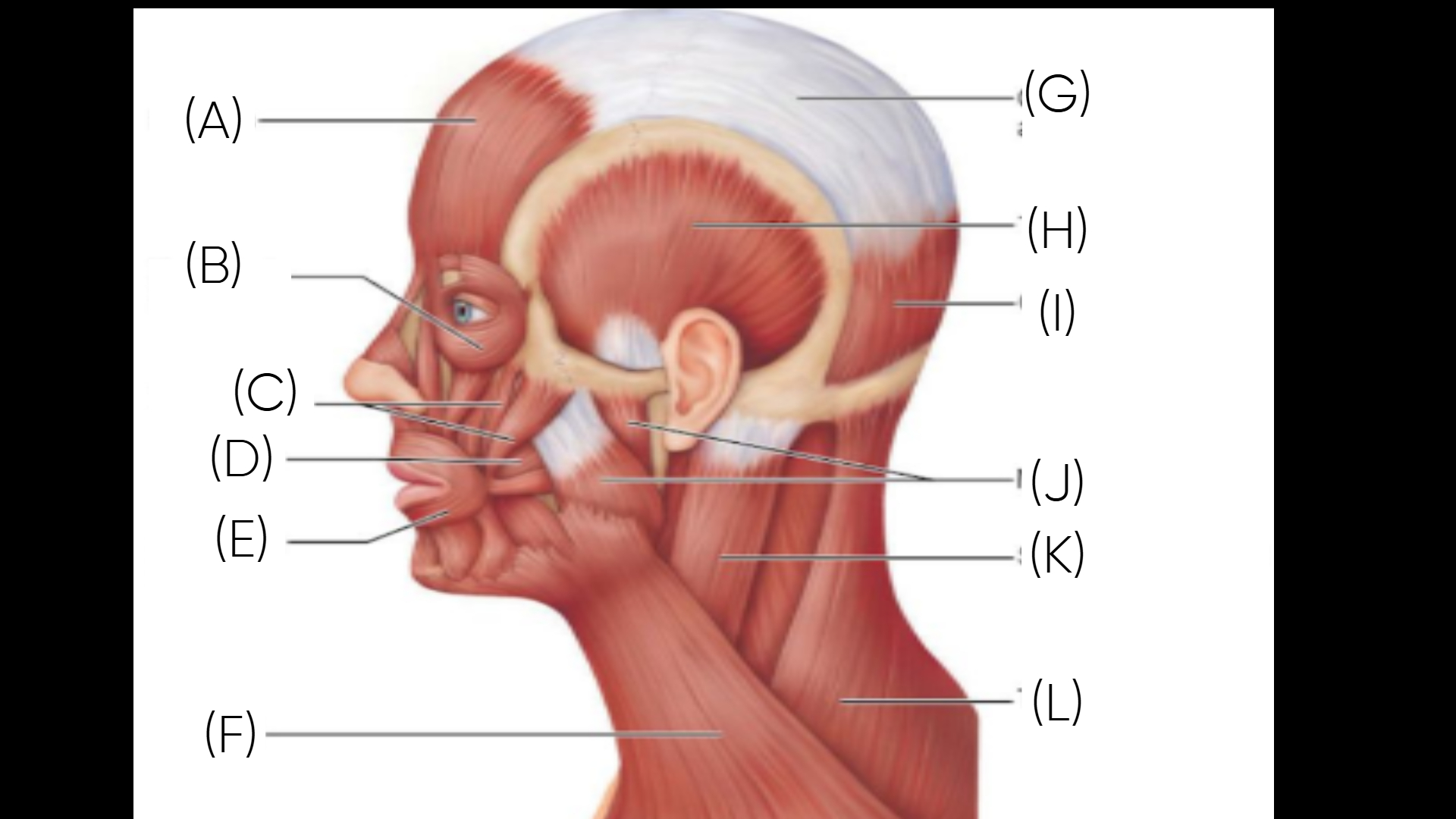
Orbicularis oculi
Muscle name for letter b
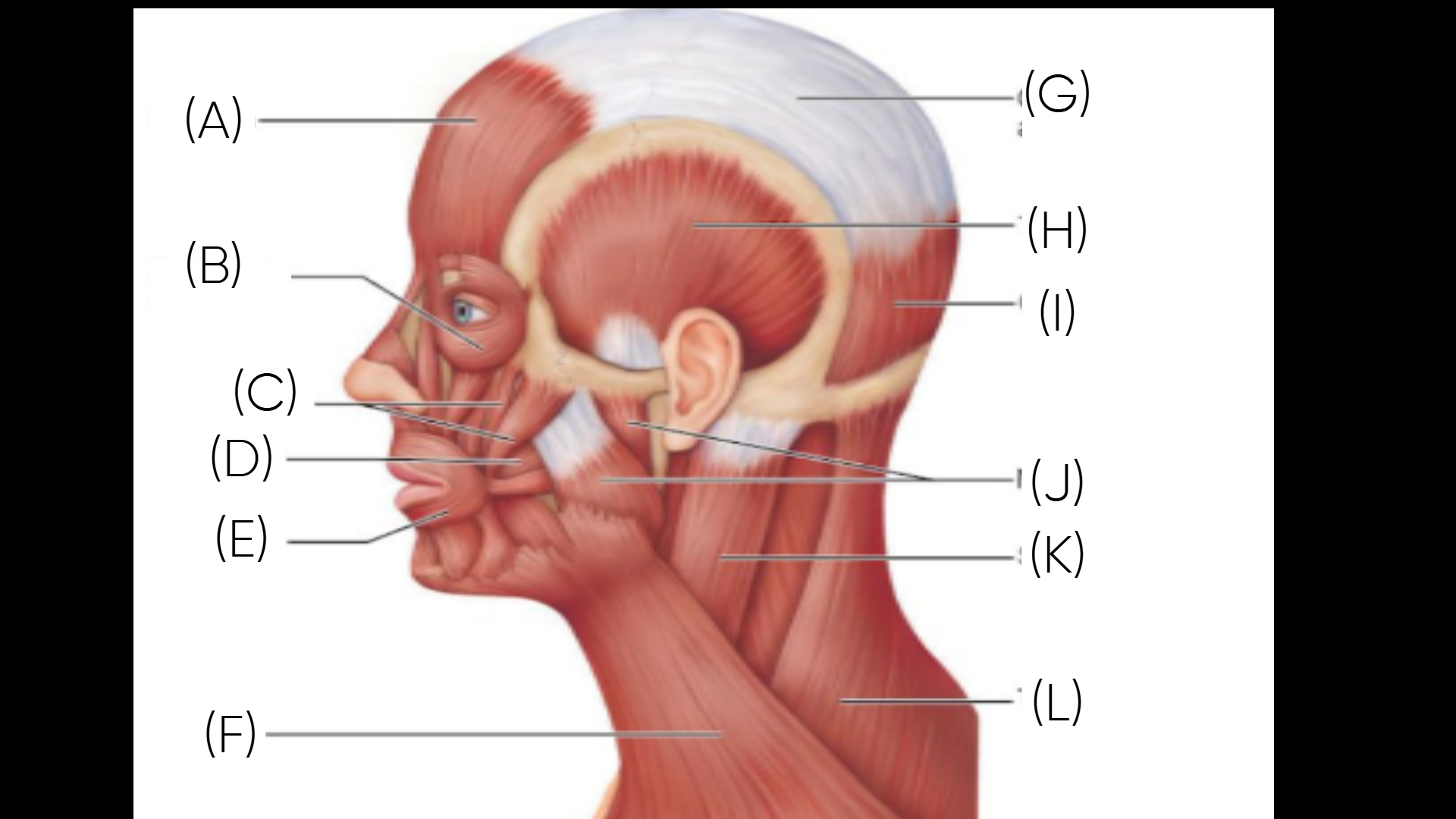
Zygomaticus
Muscle name for letter c
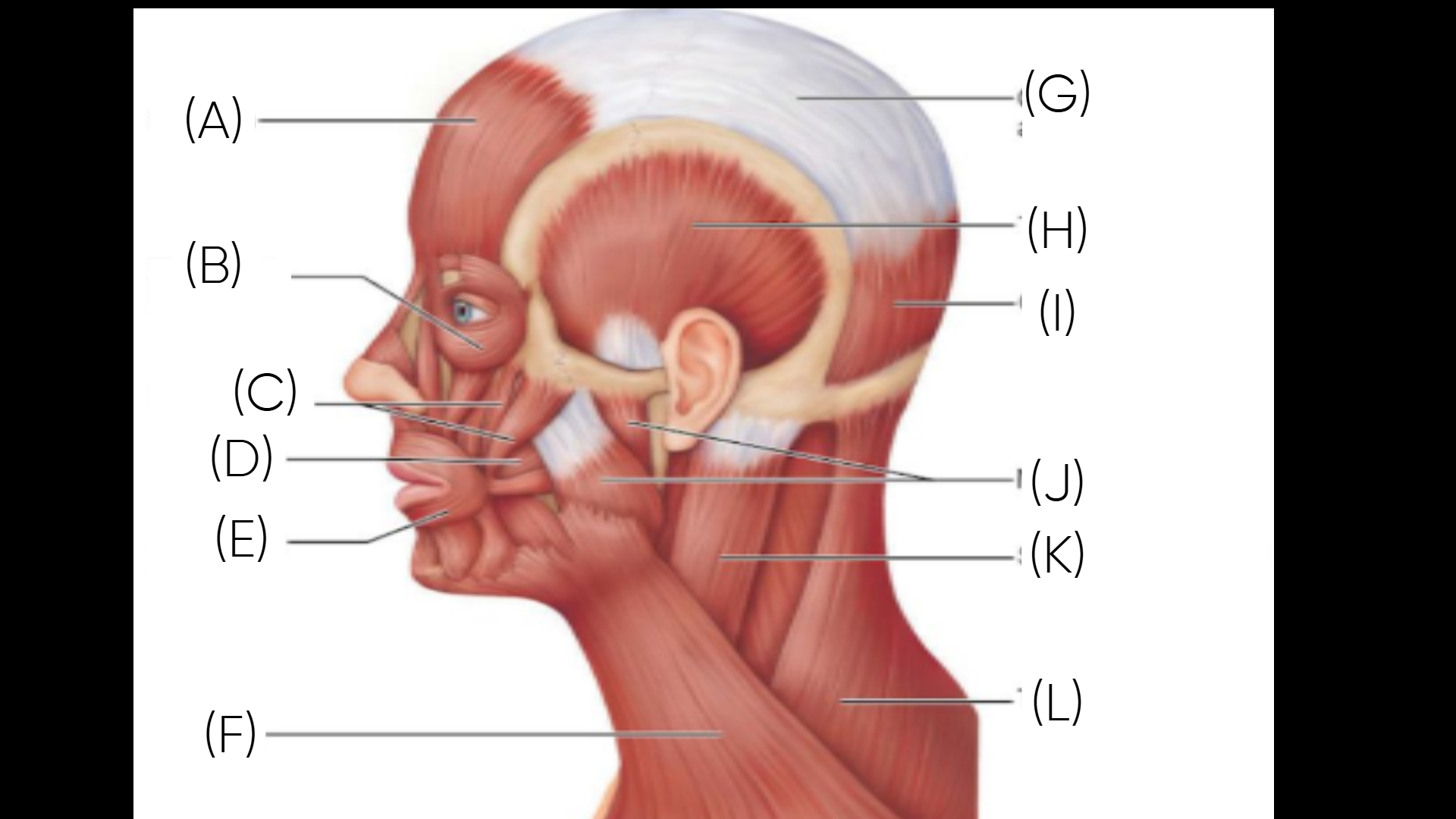
Buccinator
Muscle name for letter d
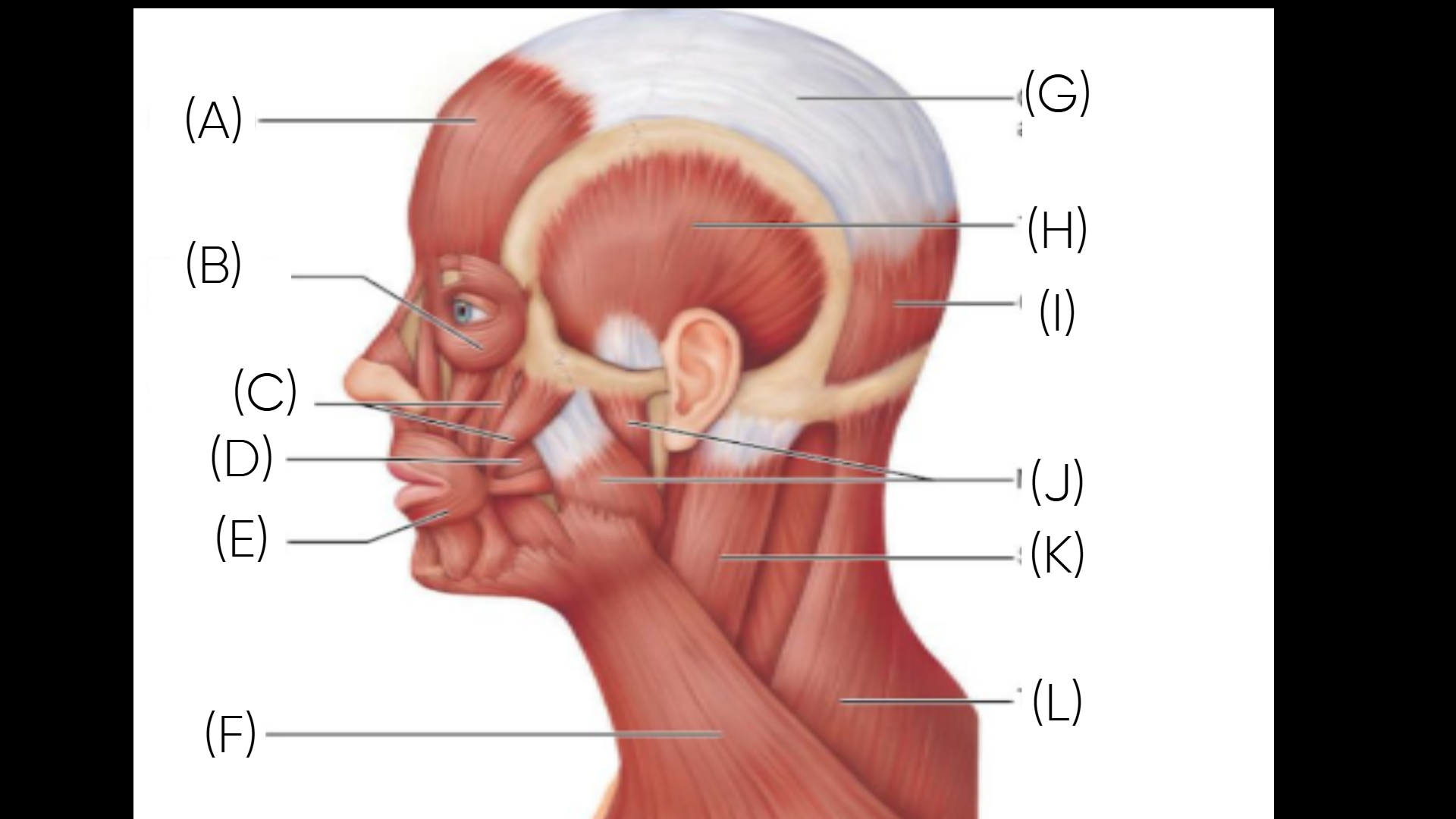
Ocularis oris
Muscle name for letter e
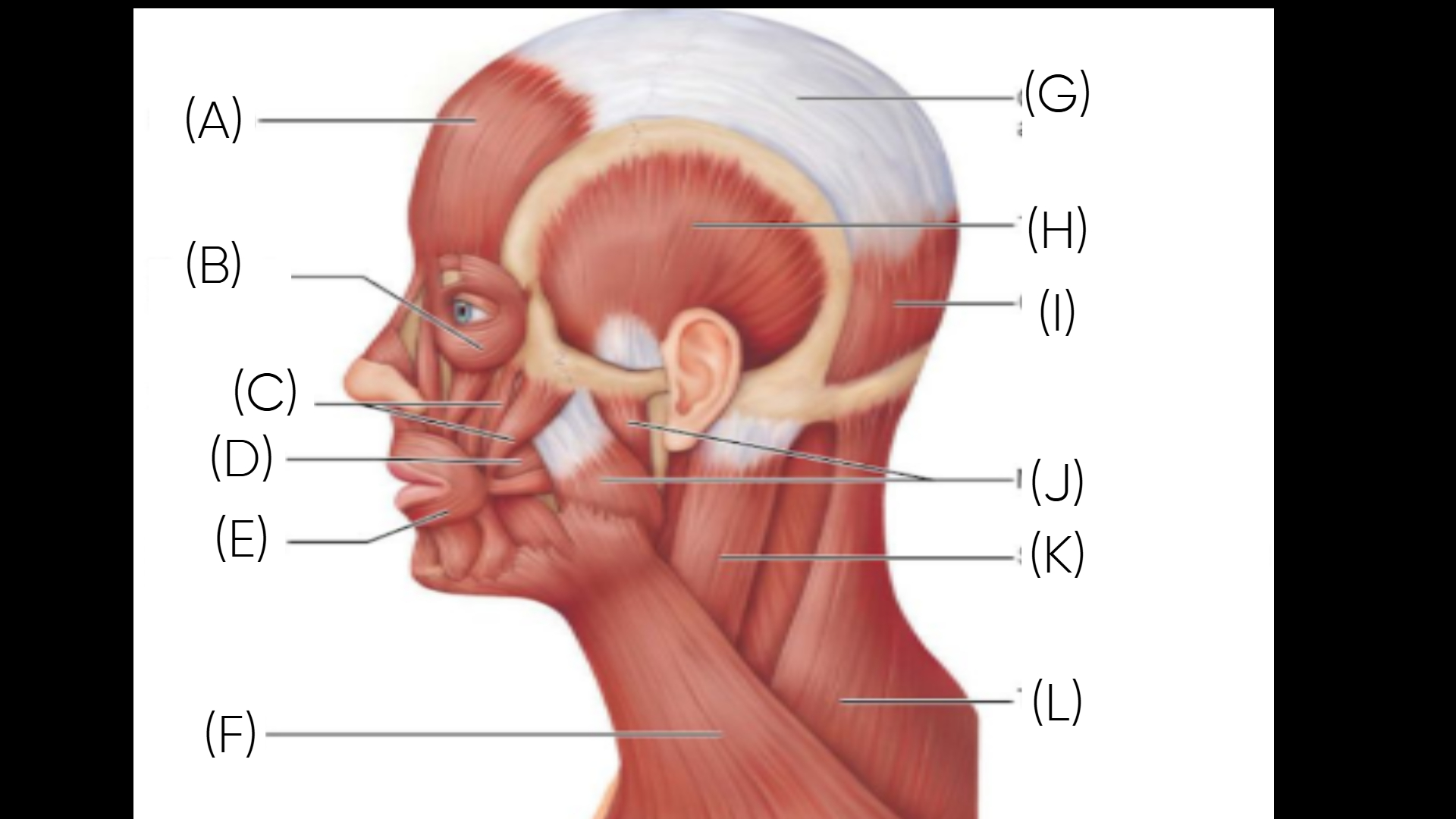
Platysma
Muscle name for letter f
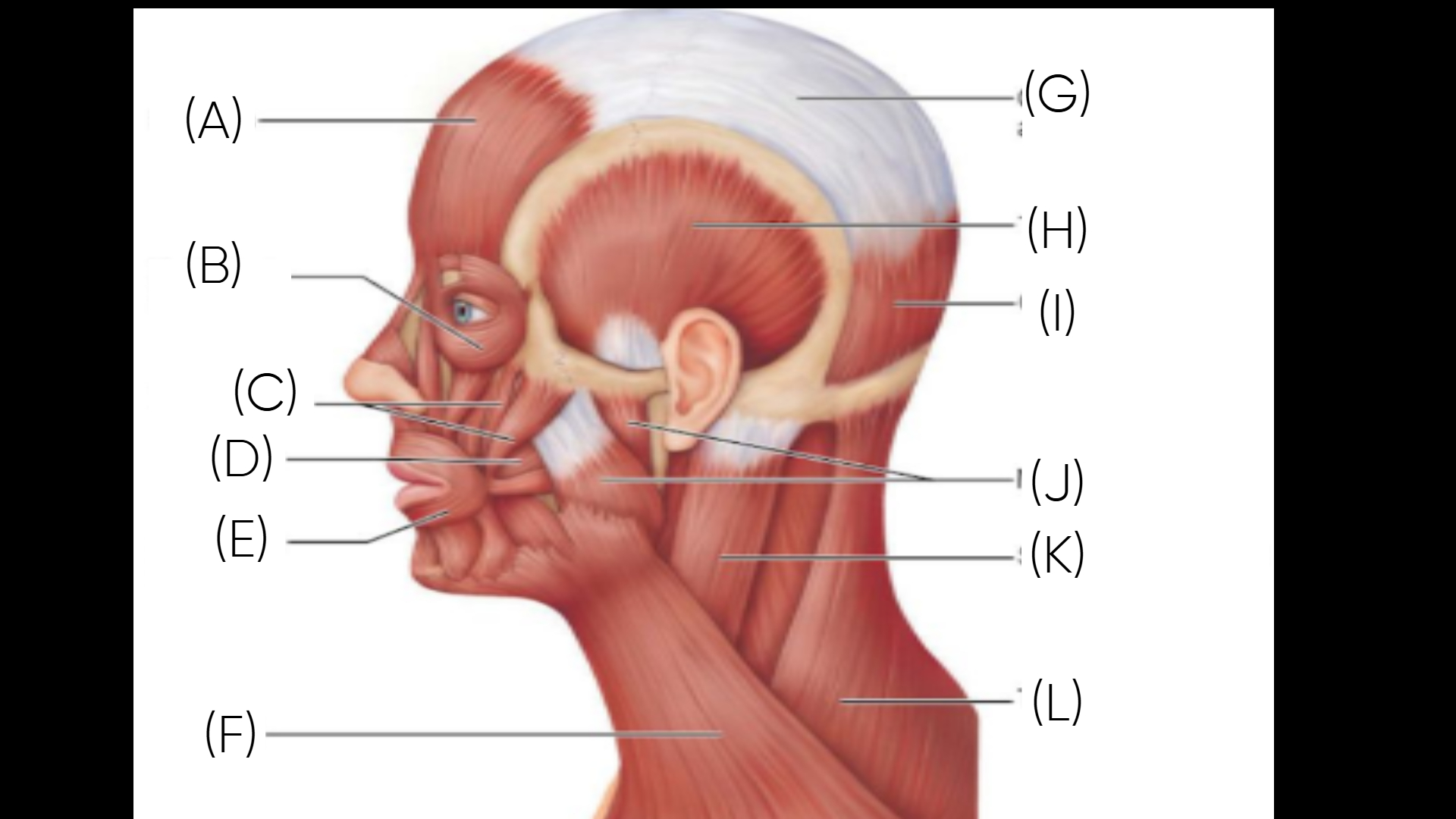
Cranial aponeurosis
Name for letter g

Temporalis
Muscle name for letter h
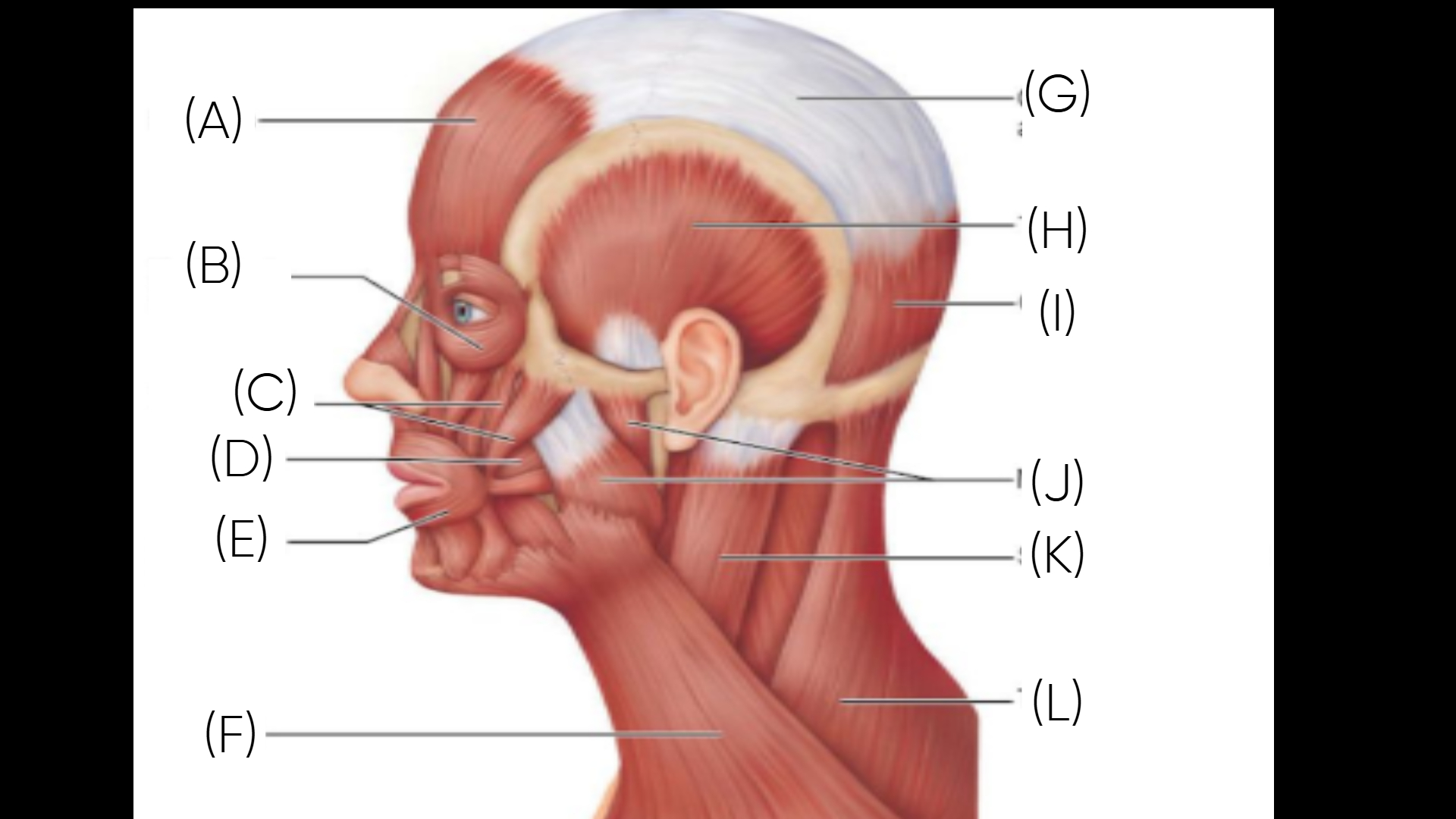
Occipitalis
Muscle name for letter i
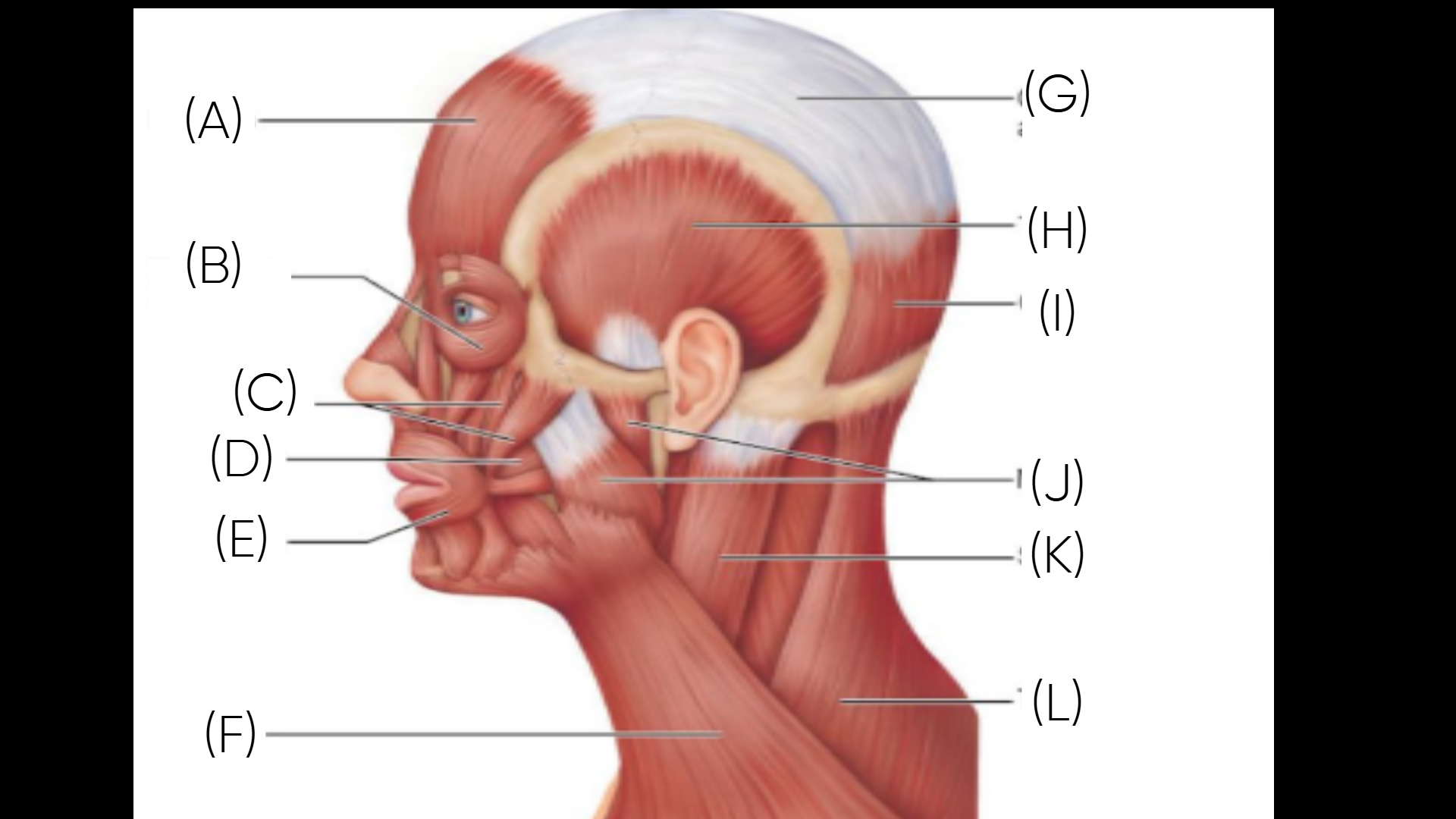
Masseter
Muscle name for letter j
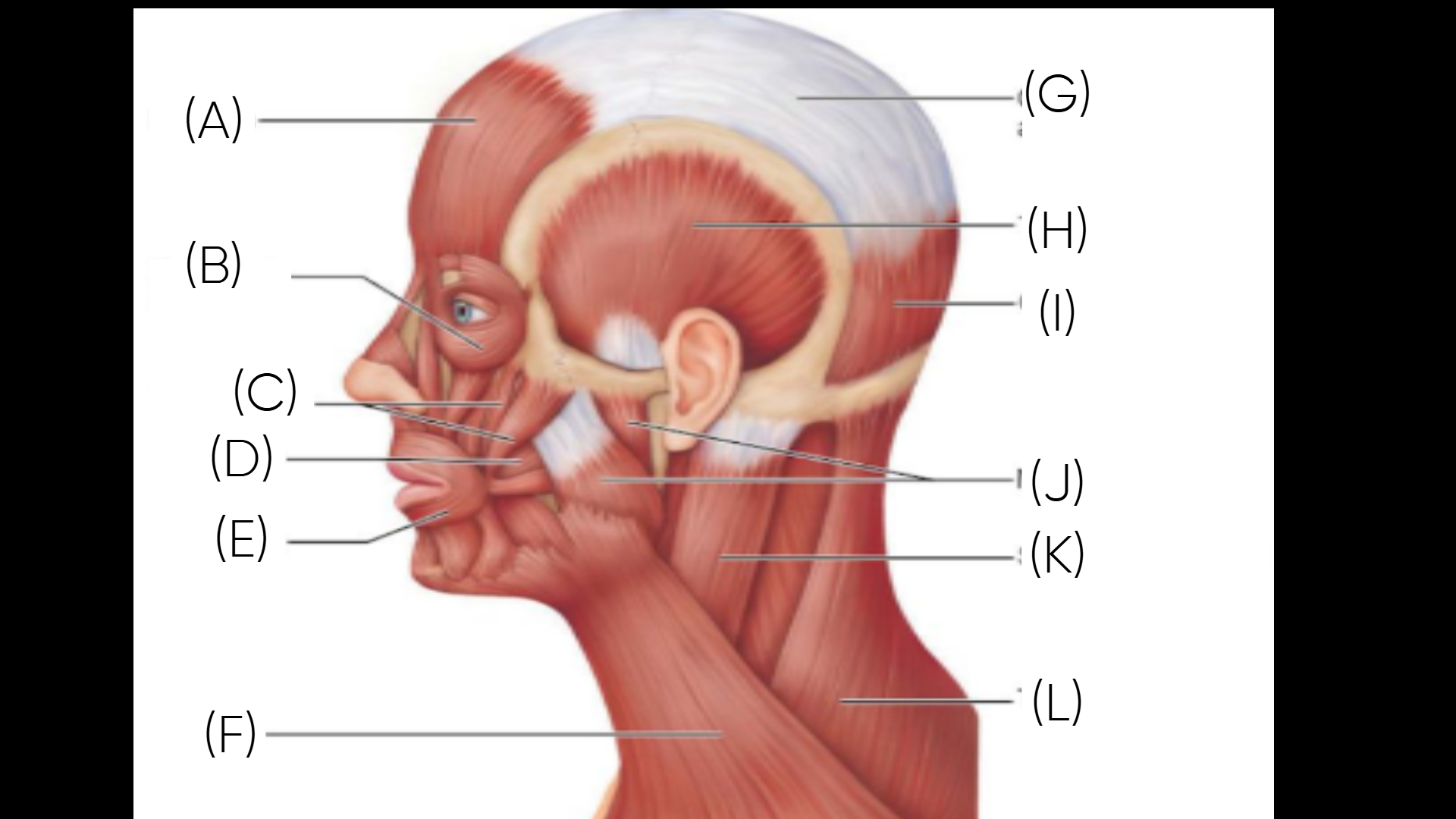
Sternocleidomastoid
Muscle name for letter k
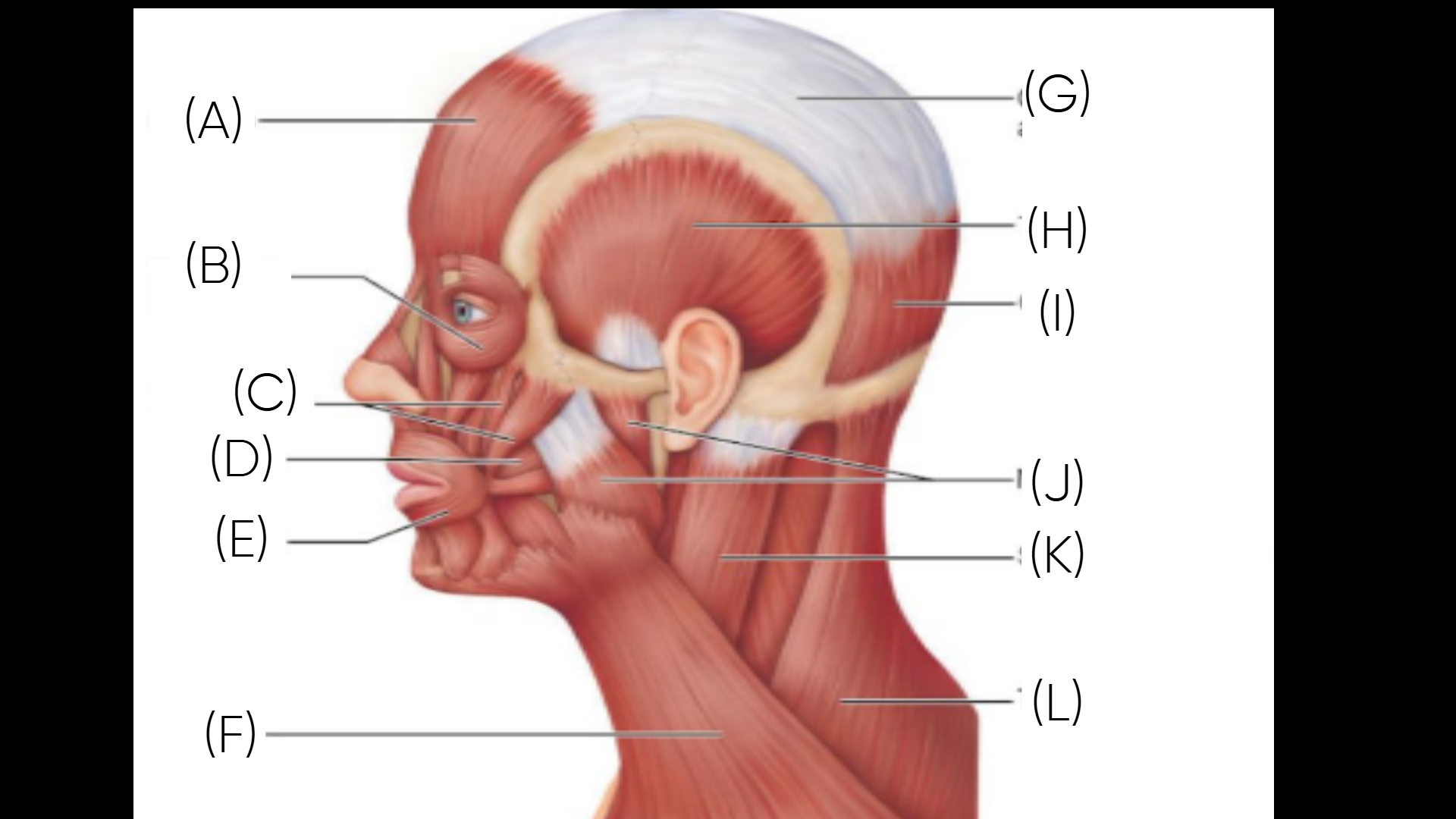
Trapezius
Muscle name for letter l
Circular
the fascicles are arranged in concentric rings. These are typically found surrounding external body openings.
Sphincter
What’s the general term for a circular arrangement of fascicles?
Convergent
fascicles converge toward a single insertion tendon.
Parallel
the length of the fascicles run parallel to the long axis of the muscle.
Fusiform
spindle shaped muscle with an expanded midsection.
Pennate
fascicles are attached obliquely to a central tendon.
Unipennate, bipennate, multipennate
What are the three (3) types of pennate arrangement?
Frontalis
muscle that covers the frontal bone, allow you to raise the eyebrows and to wrinkle the forehead.
Occipitalis
muscle that covers the posterior aspect of the bone, it pulls the scalp posteriorly.
Ocularis oculi
run in circles around the eyes.
Ocularis oris
circular muscle of the lips, also known as “kissing muscle”.
Buccinator
flattens the cheek. During chewing, it compresses the cheek to hold the food between the teeth.
Zygomaticus
“smiling muscle” because it raises the corners of the mouth upward.
Masseter
covers the angle of the lower jaw
Temporalis
acts as a synergist of the masseter in closing the jaw.
Platysma
pull the corners of the mouth inferiorly, producing a downward sag of the mouth.
Sternocleidomastoid
when both of these muscles contract together, it flexes the neck.